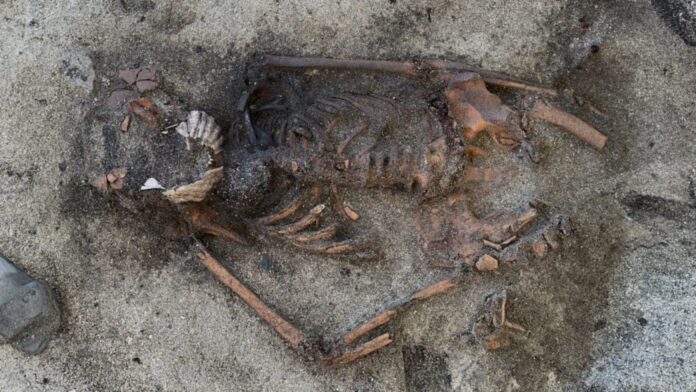A recent archaeological discovery in central Norway has unearthed a ninth-century Viking Age burial unlike any previously recorded in the region. The grave, discovered by a metal detectorist and subsequently excavated by archaeologists, contains the remains of a woman buried with two large scallop shells deliberately placed over her mouth. The unusual practice has left researchers puzzled, as this is the first known instance of such a ritual in pre-Christian Norwegian graves.
The Discovery and Initial Findings
The discovery began when Roy Søreng, an amateur metal detectorist, located a Viking Age brooch on privately owned land in Trøndelag county. Upon alerting authorities, a full archaeological excavation was conducted, revealing a well-preserved skeleton adorned with typical Viking-era clothing and jewelry. According to Raymond Sauvage, project leader at the Norwegian University of Science and Technology’s University Museum, the most striking aspect of the burial is the placement of the scallop shells.
The woman was buried wearing an outer dress secured with oval brooches and an inner slip-like garment closed by a small ring brooch – suggesting she was a free, possibly married woman of some status, perhaps even a farm mistress. While the clothing itself is consistent with Viking Age customs, the addition of the shells and accompanying bird bones is entirely unprecedented.
The Scallop Shells: A Symbol Lost to Time
The shells, identified as Great Atlantic scallops native to the northeastern Atlantic, were positioned with the curved side facing outward and the straight edge pressing against the deceased’s jaw. The archaeologists have yet to determine if the shells were intentionally modified with holes or other markings. Sauvage notes that while the shells likely originated locally (the region is known for its rich scallop populations, though harvesting would have required diving), their symbolic meaning remains elusive.
Historically, scallop shells held symbolic value in other cultures: fourth-century Roman coffins sometimes featured them as representations of life after death, and in the Middle Ages, they were associated with the pilgrimage to St. James. However, there is no direct evidence linking these meanings to Viking Age practices.
“It is likely that the scallop shells had a symbolic meaning intended to be communicated to those witnessing the burial,” Sauvage stated. “Unfortunately, it is difficult to guess what this meaning could have been.”
Ongoing Research and Future Implications
The discovery is significant not only for its unique ritual but also for the exceptional preservation of the skeleton. Archaeologists have already unearthed a second, older burial (dating to the eighth century) nearby, suggesting a potential familial connection.
Researchers plan to conduct further analysis, including DNA testing and radiocarbon dating, to learn more about the individuals buried at the site. The goal is to understand their relationship, the reason for the unusual burial ritual, and how it fits into the broader context of Viking Age beliefs and practices.
This discovery underscores the enduring mysteries of the Viking Age. The purpose behind this unique burial remains unclear, but further research may eventually reveal its significance.
